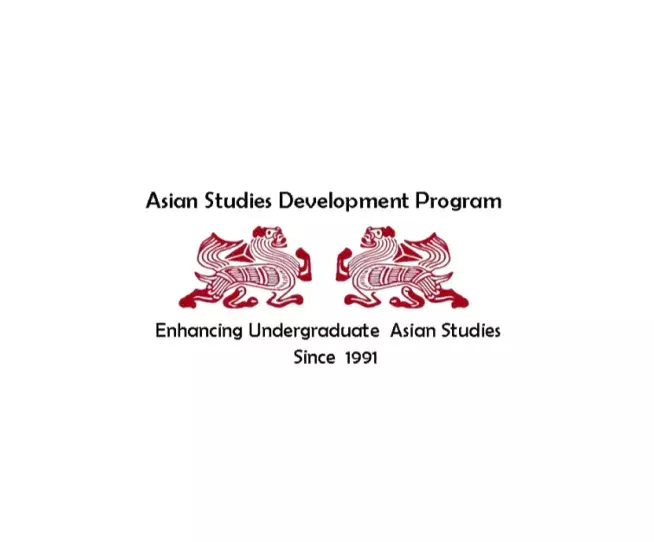Error message
ASDP MISSION
There has been general acknowledgment within the higher education community of the need to infuse Asian studies into the undergraduate curriculum, but there are limited resources available for such initiatives, particularly for the majority of two-year and four-year colleges and universities, particularly minority-serving colleges. In order to address this challenge, the Asian Studies Development Program (ASDP) was established in 1991 with the mission of enhancing undergraduate teaching and learning-about, -with and -from Asian cultures and societies through a “curriculum development through faculty development” approach.
Designed to assist colleges with the goal of infusing content on Asia throughout the undergraduate core curriculum, ASDP was initiated as a joint project of the University of Hawai'i, the East-West Center, the American Association of State Colleges and Universities (AASCU), and the American Association of Community Colleges (AACC). In 1992, the National Association for Equal Opportunity in Higher Education (NAFEO) and the Hispanic Association of Colleges and Universities (HACU) joined the ASDP consortium.
Using the extensive Asian studies resources and expertise at the East-West Center and the University of Hawai'i, the goal of ASDP is to improve the long-term capacity of American higher education to teach about Asian cultures. ASDP promotes a comparative approach to infusing Asian material into the undergraduate curriculum, especially core courses in the humanities and social sciences, believing that in this way, not only do students come to understand more about other cultures, they better understand their own.
ASDP does this through a variety of programs aimed at faculty, curriculum and institutional development, offering on-going support for faculty and institutions so that they are able to sustain their Asian studies development initiatives. This means helping colleges with on-campus faculty workshops, acquisition of teaching resources and syllabi, clarification and articulation of institutional goals, identifying visiting speakers, library development, and so on.
To date, faculty members from over 500 colleges and universities across the U.S., more than 50 universities in Asia, and 10 universities in Latin America have participated in ASDP programs.
ASDP History
ASDP began with a single institute in the summer of 1991 and has gradually expanded both its programmatic reach and its network of scholars and teachers dedicated to enhancing undergraduate teaching and learning about Asia. With a network that includes faculty members from hundreds of colleges and universities in the U.S. and Asia, and that stretches back over two decades, the ASDP experience reflects a culture of responding to both faculty member and institutional needs initiative and drawing upon their distinctive insights.
To learn more, see ASDP Program History (PDF)
ASDP MISSION
There has been general acknowledgment within the higher education community of the need to infuse Asian studies into the undergraduate curriculum, but there are limited resources available for such initiatives, particularly for the majority of two-year and four-year colleges and universities, particularly minority-serving colleges. In order to address this challenge, the Asian Studies Development Program (ASDP) was established in 1991 with the mission of enhancing undergraduate teaching and learning-about, -with and -from Asian cultures and societies through a “curriculum development through faculty development” approach.
Designed to assist colleges with the goal of infusing content on Asia throughout the undergraduate core curriculum, ASDP was initiated as a joint project of the University of Hawai'i, the East-West Center, the American Association of State Colleges and Universities (AASCU), and the American Association of Community Colleges (AACC). In 1992, the National Association for Equal Opportunity in Higher Education (NAFEO) and the Hispanic Association of Colleges and Universities (HACU) joined the ASDP consortium.
Using the extensive Asian studies resources and expertise at the East-West Center and the University of Hawai'i, the goal of ASDP is to improve the long-term capacity of American higher education to teach about Asian cultures. ASDP promotes a comparative approach to infusing Asian material into the undergraduate curriculum, especially core courses in the humanities and social sciences, believing that in this way, not only do students come to understand more about other cultures, they better understand their own.
ASDP does this through a variety of programs aimed at faculty, curriculum and institutional development, offering on-going support for faculty and institutions so that they are able to sustain their Asian studies development initiatives. This means helping colleges with on-campus faculty workshops, acquisition of teaching resources and syllabi, clarification and articulation of institutional goals, identifying visiting speakers, library development, and so on.
To date, faculty members from over 500 colleges and universities across the U.S., more than 50 universities in Asia, and 10 universities in Latin America have participated in ASDP programs.
ASDP History
ASDP began with a single institute in the summer of 1991 and has gradually expanded both its programmatic reach and its network of scholars and teachers dedicated to enhancing undergraduate teaching and learning about Asia. With a network that includes faculty members from hundreds of colleges and universities in the U.S. and Asia, and that stretches back over two decades, the ASDP experience reflects a culture of responding to both faculty member and institutional needs initiative and drawing upon their distinctive insights.
To learn more, see ASDP Program History (PDF)


